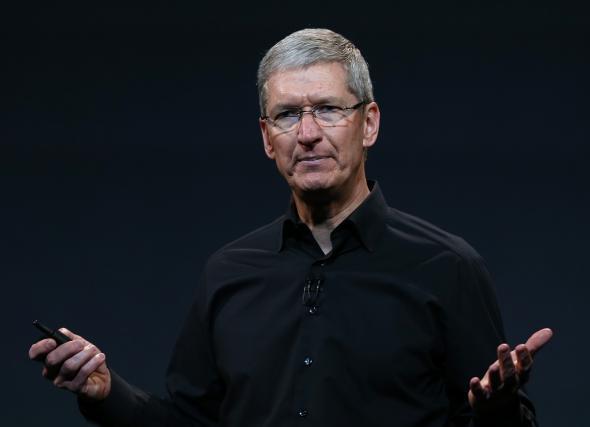Tim Cook showed up to Wednesday’s Apple earnings call more or less bearing Champagne and roses for his company’s investors. Aside from solid revenue growth and iPhone sales, the company said that it would fatten up its dividend and increase its stock buyback program to put more money back in stockholders’ pockets. Perhaps most surprisingly, the company also announced a 7-for-1 stock split come June, meaning Apple’s individual shares, which trade for around $525 now, will soon be available for far less.
During the earnings call, Cook told analysts that the move was meant to make Apple shares “more accessible to a larger number of investors”—which I take to mean retail investors who might blanche at paying north of $500 for a single share of a company. But does the stock split actually make this a good time to go buy that Apple stock you wish you’d purchased in 1999?
Maybe.
Here a word of caution is necessary: Most of us have no business trying to pick stocks and are better off plopping what little savings we have into index funds that track the overall performance of the market. With that said, there is some interesting research suggesting that company shares tend to get a boost in the wake of a split. David Ikenberry, dean of the University of Colorado’s business school, has found that shares overperform significantly for about a year after a split announcement. According to the Wall Street Journal, one investment advisory service has even created a model portfolio consisting of nothing but stocks that have recently been bifurcated, which it says has delivered a 14 percent annual return over the past decade, compared to 8 percent for the S&P.
This is somewhat curious. After all, stock splits don’t create any new value. They just bust up shares into smaller, more affordable pieces. “The stock split itself, the mechanical splitting of the shares, is a non event,” Ikenberry explained to me. Rather, stock splits tend to bode well for companies because they are a sign of confidence. Most companies like their stocks to trade within a certain range. It can’t be too high, because even if the fundamentals justify a lofty price, retail investors get intimidated (instead of looking at factors like price-to-earnings ratios). But it also can’t be too low, because everyone gets squeamish when shares scrape bottom. If a company is willing to cut its share price in half or in thirds with a split, it usually means management believes the business is in good enough shape that they won’t have to worry about shares dipping even further down the line.
“So it’s self-selection bias,” Ikenberry says. Companies that split their stocks fare well because they tend to be strong companies in the first place. (It takes a while for the shares to demonstrate these positive effects, because the market tends to underreact to the news at first.)
Notably, tech companies like Apple and Google have tended to forgo splits, choosing to let prices rise, whether or not it freaks out Main Street investors. That may have something to do with the influence of Warren Buffett, who traditionally took a similar approach to Berkshire Hathaway’s share price. But now Apple seems to be thinking about the little guy.
“Apple to me is the poster child for a company that wants to do this,” Ikenberry says. “They’re an iconic retail brand. Like Walt Disney. And Coca-Cola.”
Which is to say, maybe this is just another sign Apple is starting to look like most other big companies—albeit, one that’s a whole lot more profitable.
